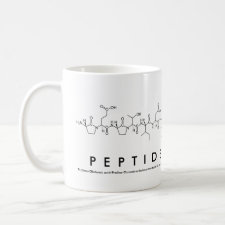
Authors: Liu L, Qiao ZW, Cui XF, Pang CJ, Liang H, Xie P, Luo X, Huang ZQ, Zhang YJ, Zhao ZX
Article Title: Amino Acid Imprinted UiO-66s for Highly Recognized Adsorption of Small Angiotensin-Converting-Enzyme-Inhibitory Peptides.
Publication date: 2019
Journal: ACS Applied Materials & Interfaces
Volume: 11
Issue: (26)
Page numbers: 23039-23049.
DOI: 10.1021/acsami.9b07453
Abstract: Introduction of targeted defects into microporous UiO-66s for manipulating their three-dimensional size and surface properties can endow them with adsorption and separation areas involving angiotensin-converting-enzyme-inhibitory (ACE-inhibitory) peptides. Three hydrophobic amino acids (AAs) (i.e., proline (Pro), phenylalanine (Phe), and tryptophan (Trp)) having different physical/chemical properties were applied to in situ tailor defects in UiO-66 through targeted incoordination of missing linkers or missing nodes. Characterization results revealed a uniform oval shape of the developed defects with lengths ranging from 1.8 to 3.1 nm, which was also highly consistent with our molecular simulation. Among these three defective UiO-66s, Phe and Trp imprinted UiO-66s significantly promoted the adsorption affinity of small ACE-inhibitory peptides (uptake: 1.25 mmol g-1 for DDFF and 1.37 mmol g-1 for DDWW) and ultrahigh selectivity for DDFF (249) or DDWW (279) from inactive KKKK solution based on a lock-and-key mechanism. As a result, the imprinted UiO-66 showed an enrichment capacity for ACE-inhibitory peptides about eight times higher than that of pristine UiO-66. Therefore, the amino acid imprinting strategy endorsed by its facile and discerning ability can be envisioned to be of great value for small functional peptide separation and oriented enrichment in biomedicines
Template and target information: proline, Pro, phenylalanine, Phe, tryptophan, Trp, angiotensin-converting-enzyme-inhibitory peptide, ACE-inhibitory peptides, DDFF, DDWW
Author keywords: defective UiO-66, amino acid imprinting, ACE-inhibitory peptides, recognized adsorption, separation, oriented enrichment



Join the Society for Molecular Imprinting

New items RSS feed
Sign-up for e-mail updates:
Choose between receiving an occasional newsletter or more frequent e-mail alerts.
Click here to go to the sign-up page.
Is your name elemental or peptidic? Enter your name and find out by clicking either of the buttons below!
Other products you may like:
 MIPdatabase
MIPdatabase









